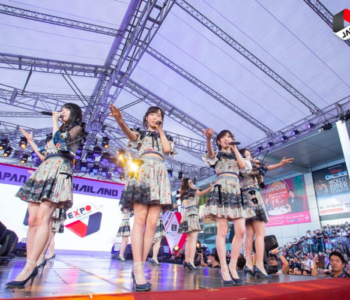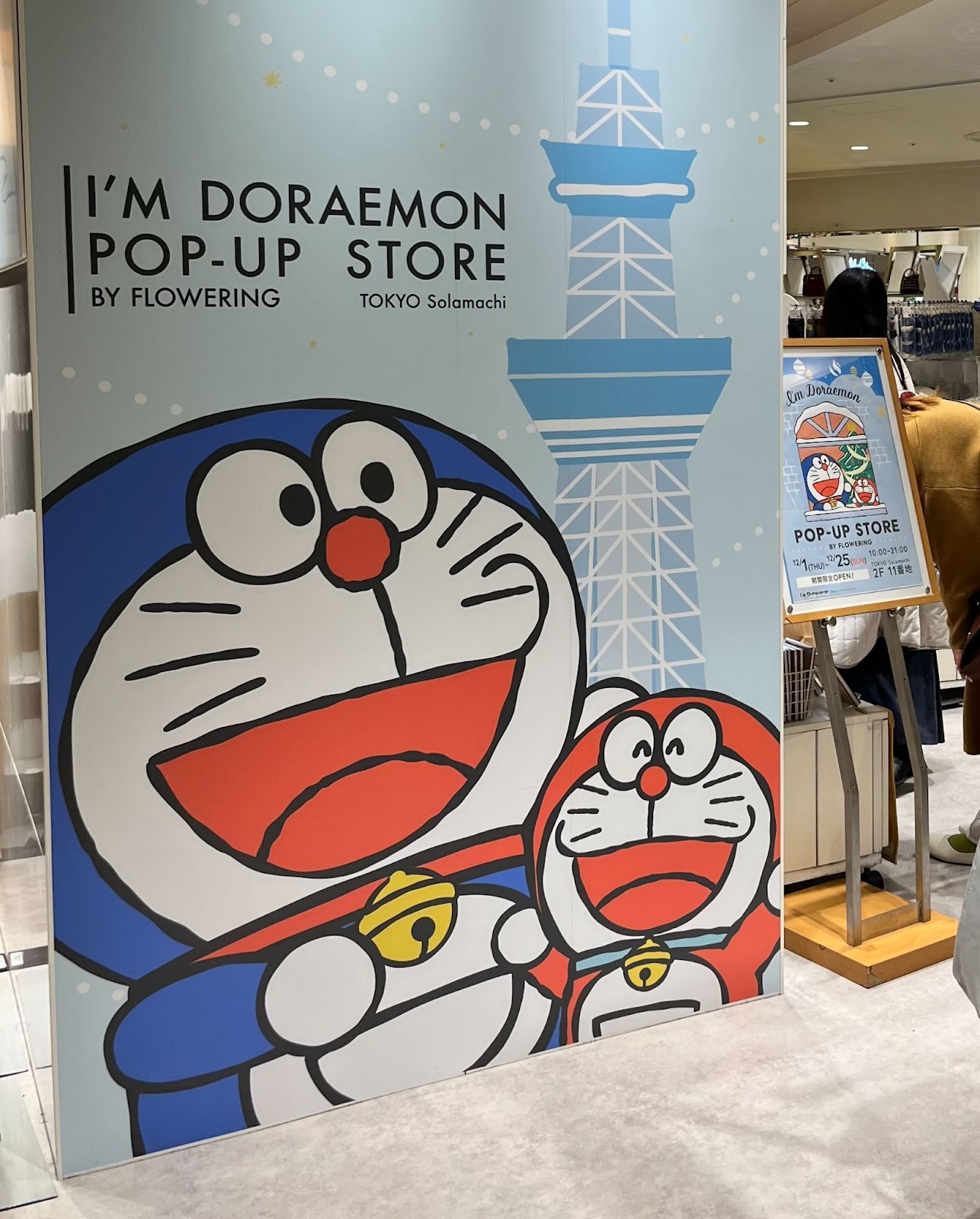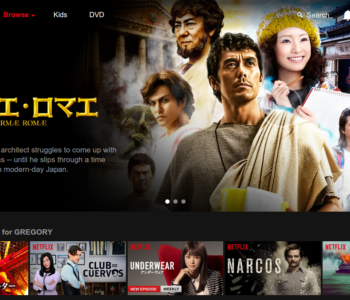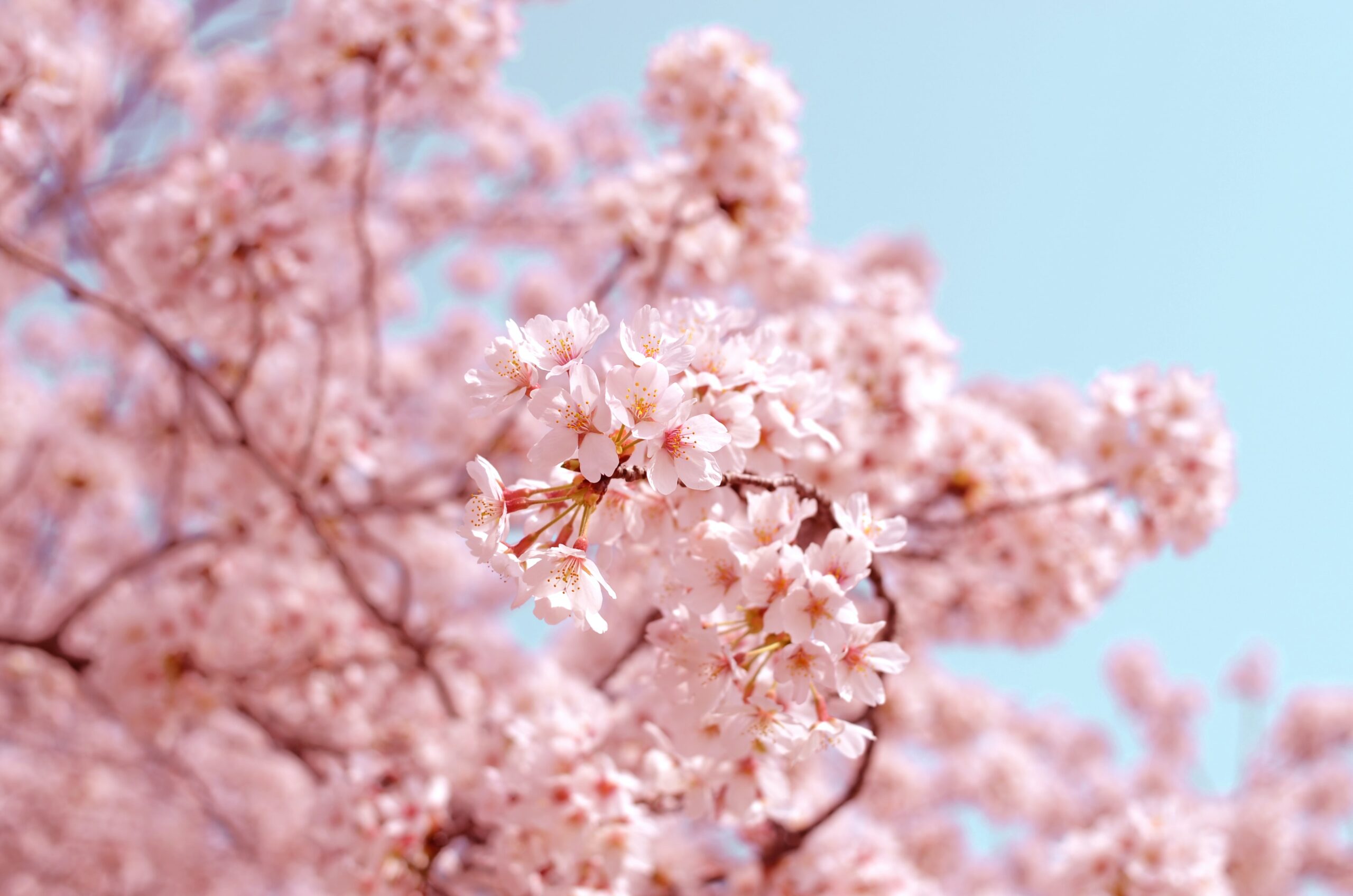SDGs: How Greenery Day Contributes To Japan’s Cut Towards…
By Luke Denhart
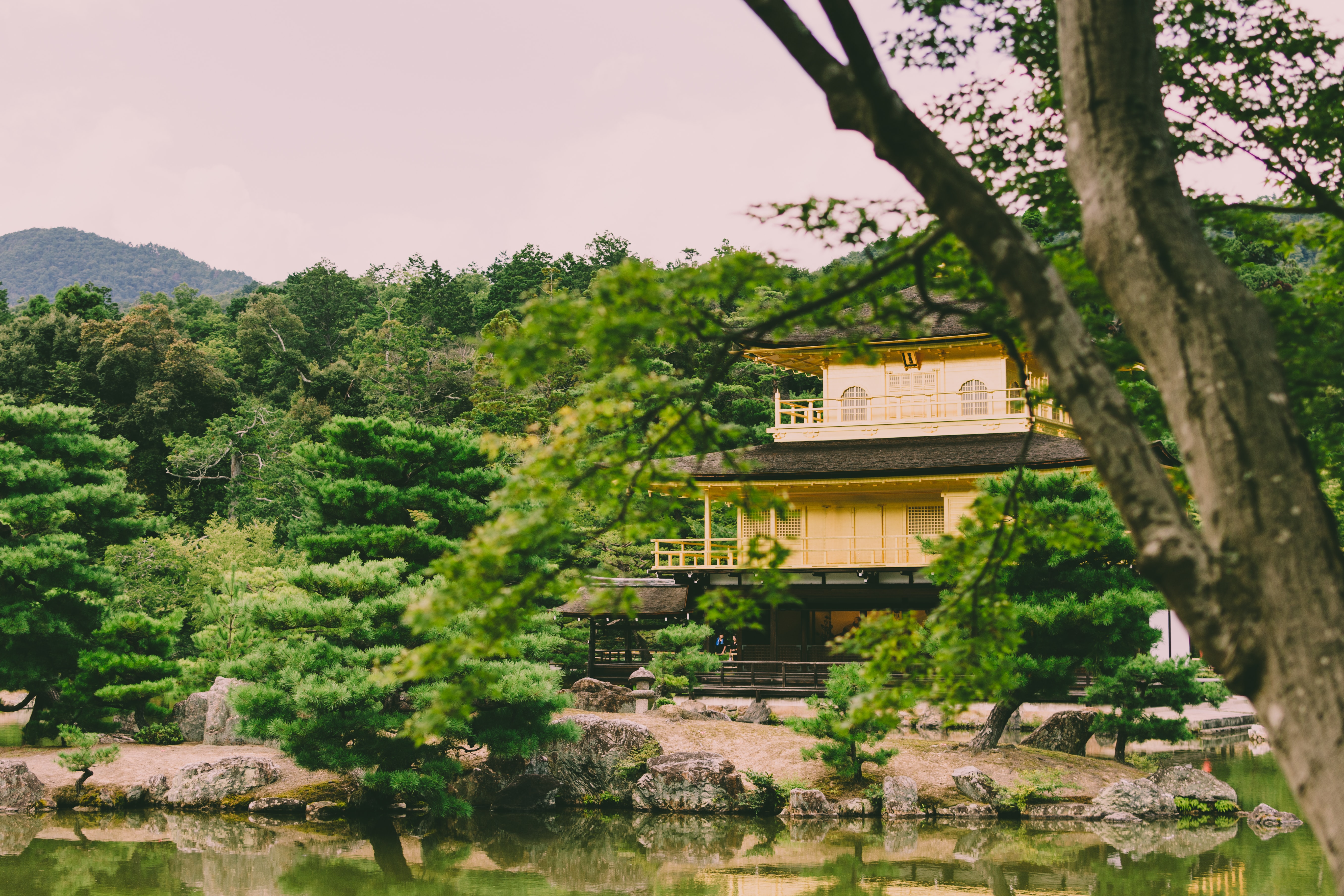
As the springtime bells ring in the season on the other side of the globe, Japan gets Golden Week underway and prepares for its string of featurette holidays. Amongst these holidays stands the celebration of nature – Greenery Day. Greenery Day remains a focal jumping-off point for brands interested in solid SDG (Sustainable Development Goal) action plans; companies looking to reshape the world positively and sustainably. Join Tokyoesque as we chronicle the rich and fascinating history of Greenery Day, the companies that strive for a more sustainable future in their bid for Japan’s SDG awards through their products and services. We’ll also cross-examine the tried-and-true SDGs innovation challenges both the Japanese government and local city councils implement in their support for businesses using the public adulation for Greenery Day in the fight for the future of the environment.
Need help with marketing in Japan? Contact us
But what is Greenery Day in Japan?
Contrary to what one might think, Greenery Day (みどりの日) is, in fact, not a celebration of the popular US punk band Green Day, but a Japanese occasion to commemorate mother nature and her blessings upon the planet. So while Americans might be heralding Star Wars Day, May 4th holds a special place in the hearts of the Japanese. Greenery Day is a jubilant commemoration of mother nature which implores its partisans to show gratitude for the gifts from the planet and all her subsequent blessings. It answers to many names, like Arbour Day, Greenery Day, and its etymological title Midori No Hi (みどりの日) – literally “green day.” Almost parallel in thinking to the western tradition of Earth Day, While the two holidays do indeed draw similarities, Greenery Day holds a lot more levity in the cultural consciousness of the Japanese public as a modernised holiday marking the birth of the emperor. What might seem a trifling novelty in the west is revered with thunderous fervour by the Japanese.
Chronicling SDGs: Corporations in Japan and The Significance of Greenery Day
The history of Greenery Day is complex, tracing its roots back to the birth of Emperor Shōwa in 1901, in part because of his love for plant life. The first Greenery Day festival saw mainstream emergence in the post-war Tokyo and Yokohama of 1948, whereupon it was promoted from a national holiday to a full-on festival, not unlike the preceding Hanami Sakura viewing party of the early spring. Since 1950, denizens across the globe came to witness the event, which included the Emperor and Empress’ tree and seed planting, greeting, and presentation of awards recognising entities (corporate or otherwise) who made visible strides in SDGs Japan achievements. Citizens followed suit by planting seeds and trees both in the hosting prefecture and across the country.
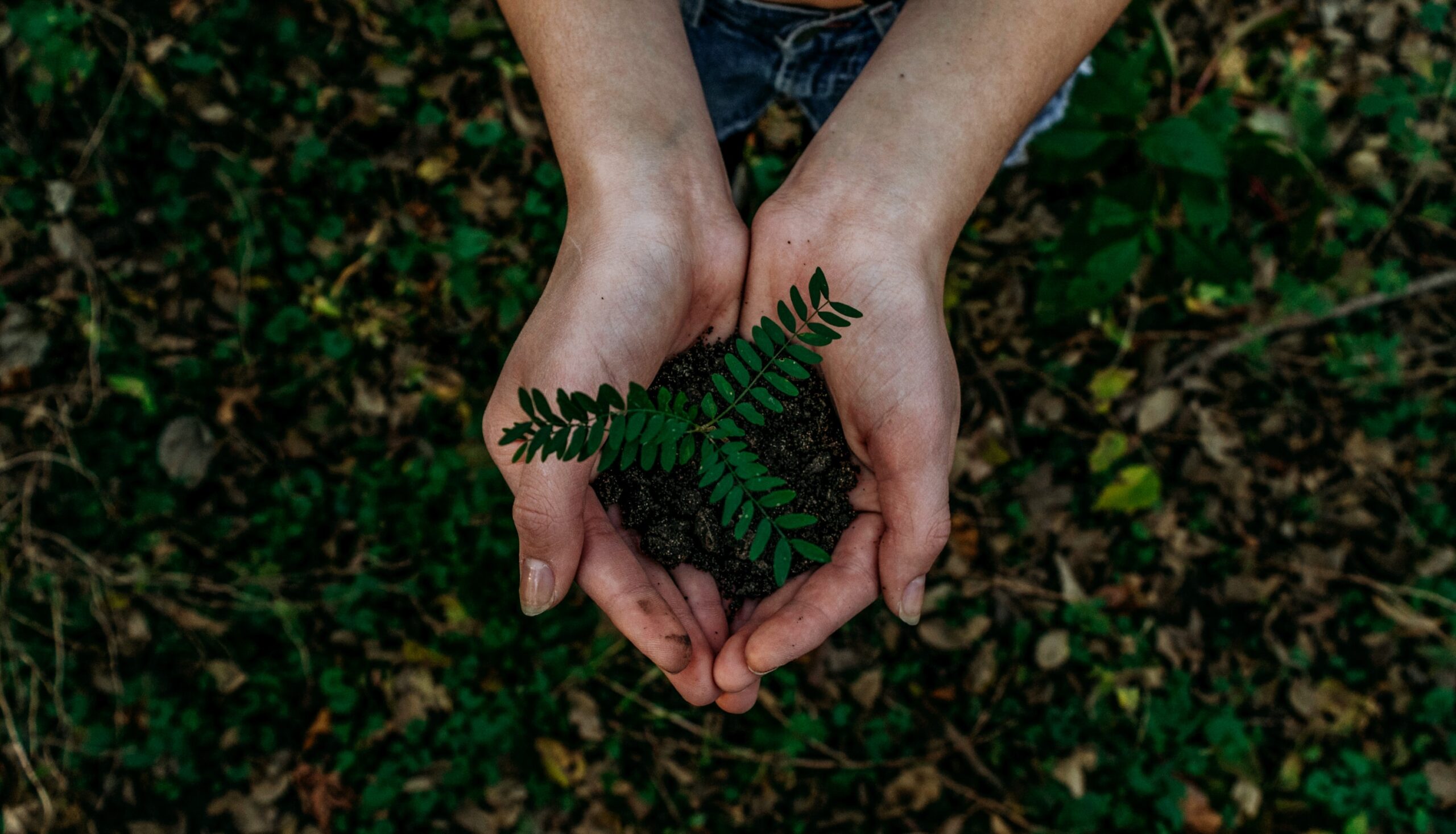
The Golden Week
This is where it gets complicated. The Japanese Golden Week (ゴールデンウィーク) is a period between April 29th to early May whereupon the particular luxuriant temperature results in Ichibancha (一番茶) – the first crop of green tea harvest. Four national holidays fall within this seven-day period. Golden Week gets its name from the “golden time” of the highest listener rating period on Japanese radio after the 1951 film Jiyū Gakkō accrued record-breaking ticket sales during the holiday week. Including Children’s Day (子供の日), Constitution Memorial Day (憲法記念日), Citizen’s Holiday (国民の休日), a Compensation Holiday, Japanese Nationals find themselves increasingly busy during this week, as it marks the arrival of the upcoming summer.
Initially, May 4th was a non-holiday; an in-betweener which, thanks to Japanese holiday law, became a holiday simply by proxy to exacerbate the popular holiday week. Greenery Day’s actual date was April 29th to both mark adoration of the Earth and the birthday of Emperor Hirohito. After his passing ended the Shōwa era in 1989, the Greenery Day holiday fermented and hardened into the holiday we know today. However, Emperor Hirohito’s iconic status as a symbol of the Japanese constitution was seen as grounds to establish a holiday purely celebrating the Shōwa Emperor himself. Since 2000, legislative reforms have been attempted. In 2007 revision laws were finally issued, and Greenery Day moved to May 4th, with the new Shōwa Day becoming April 29th.
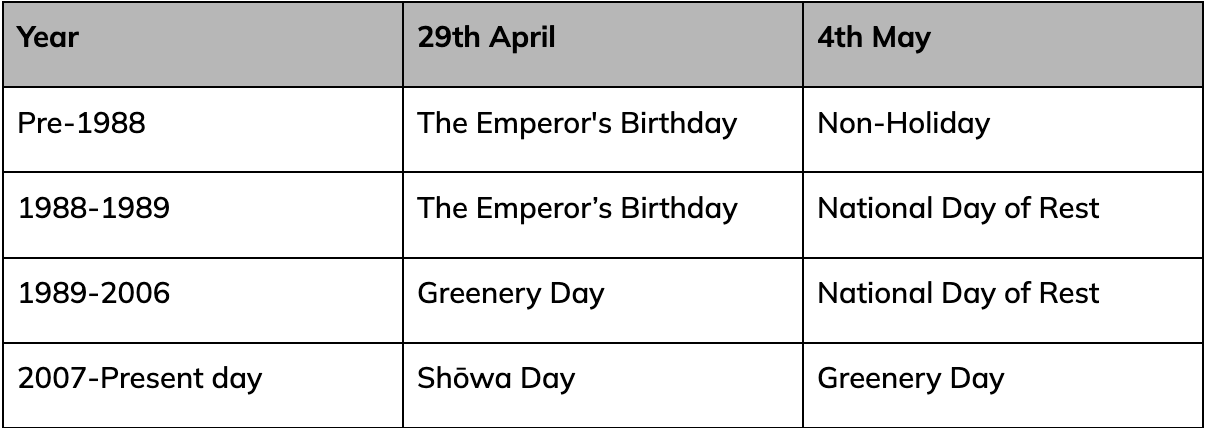
So, how is Greenery Day celebrated in Japan?
Greenery Day often goes beyond the borders of the emperor and crosses over into the daily life of the public. Most busy adults will acknowledge the holiday in a small way, donning outfits or decorating their properties in distinct greens and blues.
For those who want to go beyond a cosmetic reskin, it is customary to visit a tea garden (庭園) and sample the finest selection of green tea from the aforementioned first flush of the season. Following the example set by the emperor, people travel back to their home prefectures and plant trees. Incentivised by one of the key players in Japan’s SDGs action platform, the National Land Afforestation Promotion Organisation, the community cleans public streets, resulting in conduction of colourful parades involving eco-friendly paper lanterns. Sometimes even botanical gardens, zoos, and aquariums will offer free admission, to emphasise the green on Greenery Day.
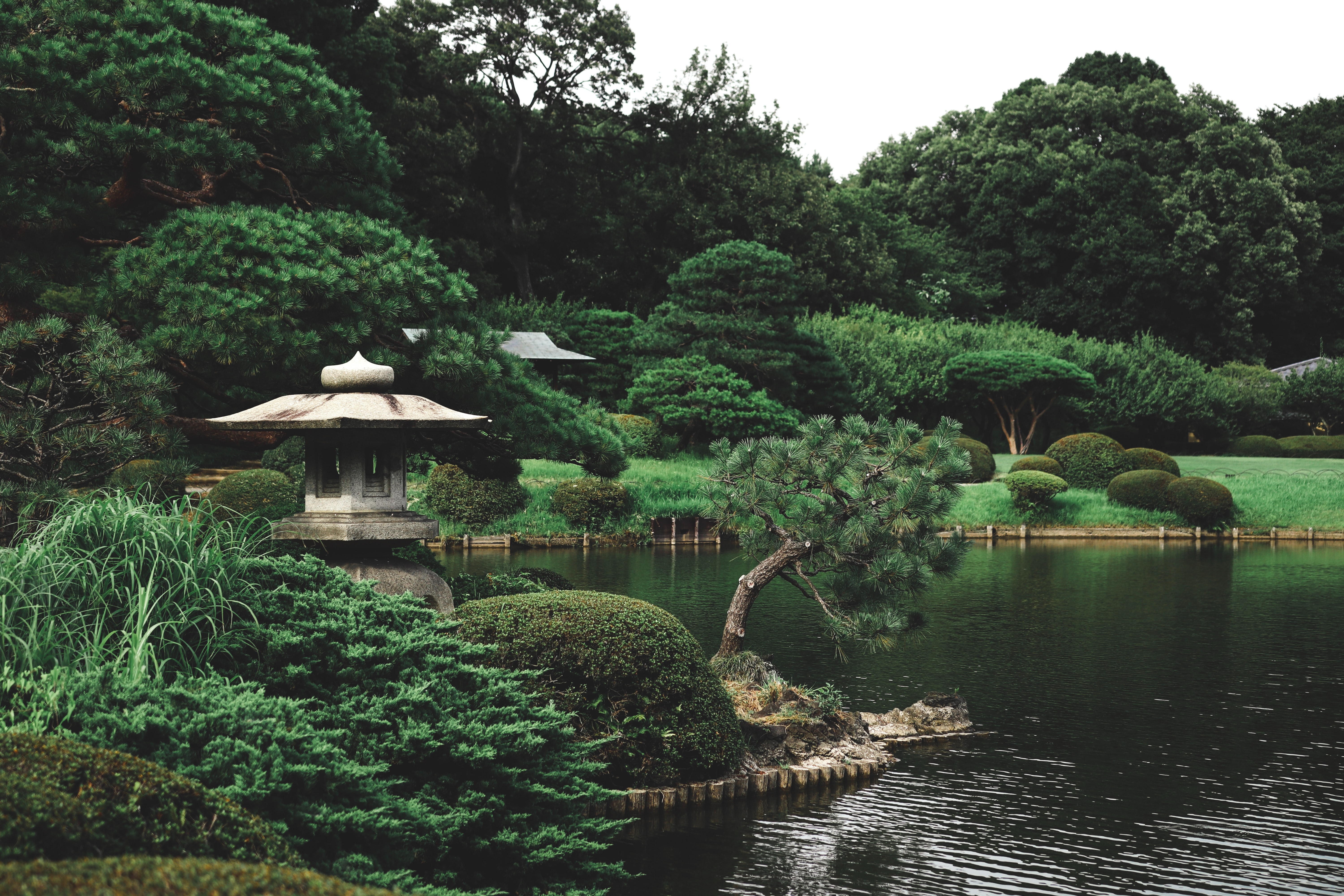
Eco-Enforcers: Japan’s SDG Ranking
Greenery Day isn’t just a corporate tool, it’s a real opportunity to educate the uneducated, to spread the word about how we as a species can cut down the impact of carbon footprint. Japan has already acquired a global reputation for being one the forerunners in the tech industry, having made historical strides in the robotics and automotive industries. Nevertheless, these eco-initiatives are less a symptom of retroactive guilt and more affirmative action towards the plights of climate change. After all, with companies like Sekisui Chemical, Japan is leading the charge in environmental emphasis across Asia, and here are just a few of the projects being conducted in the campaign against carbon:
“Cool Japan SDGs” & The Green Clean Project
To avoid any furore over the Greenery Day fete, the Japanese government and big-name corporations have made several strides in laying a foundation for healthy public attitudes towards the environment and sustainability.
The Green Clean Project
The Green Clean Project of 2022 is an effort to highlight companies that actively enforce environmental gratitude, giving them opportunities for eco-missions on Greenery Day. A 6-company crusade spearheaded by Pip Co Ltd, the project is about recognising the importance earth initiatives have in enriching the average customer. In Pip’s survey to understand the public’s eco-consciousness, they found:
- 70% identify as environmentally active.
- 69% separate their rubbish despite government restrictions.
- 68% use eco-bags instead of buying bags when shopping.
- 51% engage in water and power saving.
- 50% use refillable products.
These findings reveal public environmental consideration is by no means unimpressive, but still leaves room for improvement. Some subjects were open to refillable products should SDGs innovation challenges be met. Together, Life Tree Ltd, Terumo Corporation, Watami Co, Saraya Co, and Taskaji Co Ltd all made concentrated efforts via the Green Clean Project to deepen the Japanese public’s understanding of nature initiatives. These initiatives include gift campaigns and the Green Purchasing Network which measures the sustainable procurements of private corporations, large enterprises, governments, and Japanese companies. It so far has 1,300 registered entities!
Protecting the environment by upping the SDG score
Many Japanese enterprises are also actively tackling climate change in ways both large and little. Through their international summits setting ambitious mid-term goals of reducing greenhouse gas emissions and Prime Minister Hatoyama’s 2009 eponymous “Hatoyama Initiative” to provide technical and monetary relief to struggling nations, many SDG corporations in Japan are taking action to help the land get even higher than 15th of 162 countries in global SDG rankings.
Read more articles from us: Climate Change in Japan: Implementing Fundamental Solutions to Resolve the Crisis
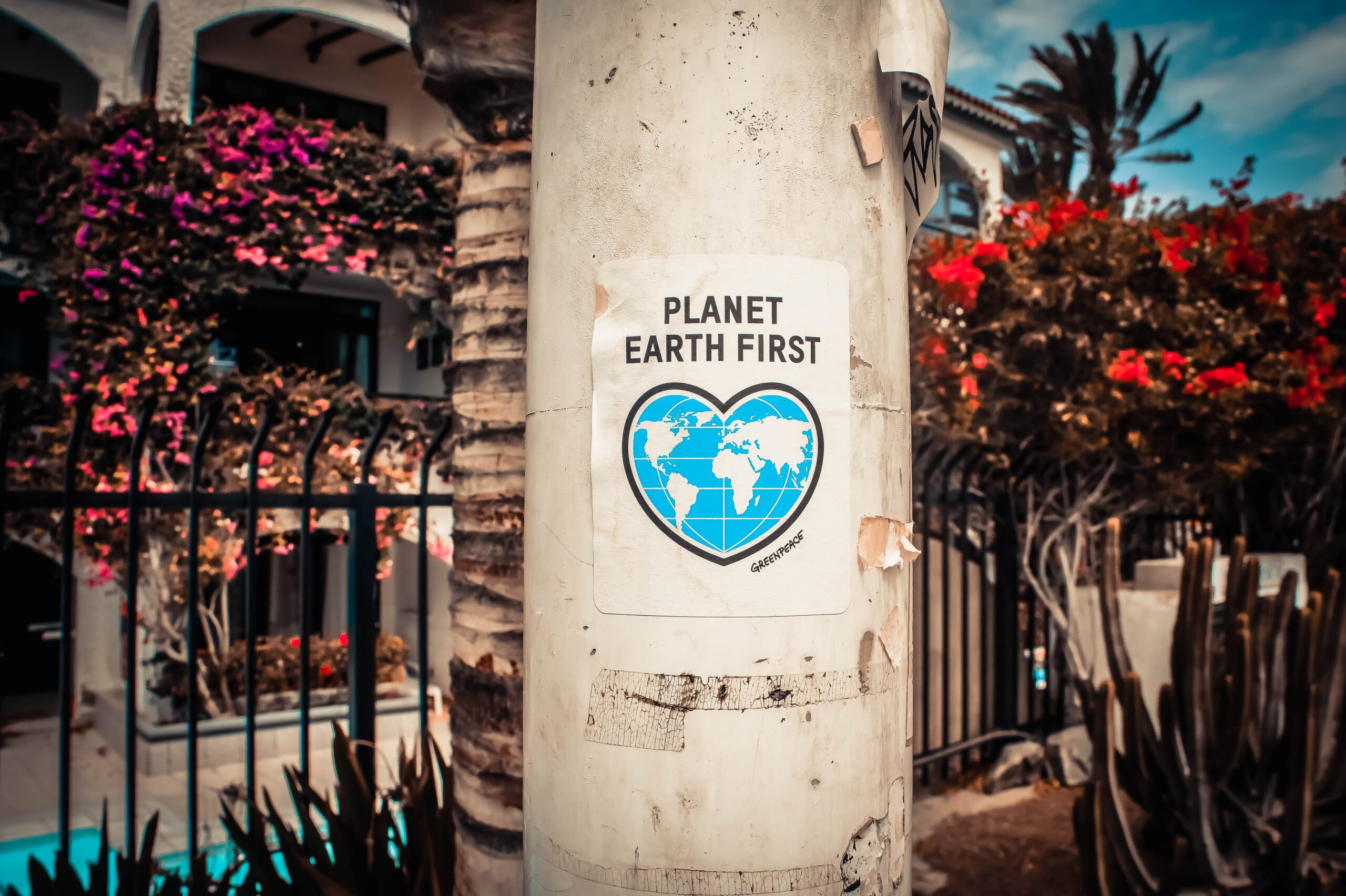
Governmental Aid:
With a waste per capita of 106 kg, Japan’s government introduced numerous reforms to both improve its ecological reputation and galvanise the public. These include:
- ESR (Electricity System Reform) – By fully liberalising the retail market, legally cementing the neutrality of the power transmission sector, and expanding electrical grid operations, METI expects to reform carbon emission attitudes and encourage greener entrants into the energy market.
- Acceleration Plan – Domestic and foreign start-ups will feel more facilitated and confident to bring their greener innovations into Japan’s tech market. This is because the government will promote giving private sector investment like ESGs more funding.
- FIT System – Using these fixed payments, the government buys electricity from renewable energy sources at a fixed price for an allotted period, enabling utility companies to recover more from their generator construction costs, and secure a renewable energy surcharge. This encourages the use of renewable energy over fossil fuels by making the price cheaper.
- FIP System – Power producers, including solar and wind firms, can freely sell their electricity at a premium rate above market price. This system also encourages investment by foreign enterprises who want to increase their bottom line.
With SDG action plans such as these, the Japanese government is letting both domestic and foreign brands know that their business lobby is a hospitable and accommodating place for greener brands. Fresher sustainable start-ups such Anaguma, Rejet, and ISpace Technologies are being welcomed in, and more traditional enterprises like Fujitsu Limited, Kao Corporation, Hitachi Ltd, and even LINE Corp are being encouraged to undertake carbon neutral initiatives. Greenery Day is emblematically appropriate to encourage the long-standing balance between society and nature, and many more brands are jumping ship thanks to government facilitation.
So, can Greenery Day secure you nothing but net (zero) in Japan?
We’ve seen how Japan welcomes eco-conscious brands, especially on the back of Greenery Day. Marketing events and promotions from sustainable enterprises are often heralded by the domestic market. As the government steps away from the fossil fuel burning of the industrial age, foreign brands offering alternatives to greenhouse gas emitters are finding success.
These enterprises are finding gaps in the market for sustainable opportunities in both the renewable energy trade and the smaller-scale movements such as:
- Use Beeswax wrap in place of cling film.
- Shopping at local organic farms like Ome Tokyo or Shunno Kitchen.
- Bringing utensils (BYOU) when dining out to discourage plastic.
- Reusable water bottle markets.
And these are just incentives found so far. The Japanese SDG award is available to any brand with the right level of innovation. Insights by Tokyoesque can provide you with the most powerful tool at your disposal: knowledge. With the knowledge we can provide, you can score an underhand advantage in the Japanese consumer brand and forge an intimate relationship with your consumer base as sustainable as the world you wish to leave behind. Greenery Day is a ripe opportunity to let your voice be heard.

Constructing a consumer base with SDG marketing:
Between legislations and SDGs in Japan, Greenery Day has proven to be the focal point in the nation’s war against waste. The refusal against refuse offers both a commercial angle and a chance to help responsibly manage the limited resources nature provided to us. With our step-by-step guide to brand awareness, you win the minds of Japanese consumers and secure a more tangible future for your children’s world.
Tokyoesque isn’t a brand about profits, it’s about relationships. Our market research can forge an open dialogue between you and your consumer. If you follow suit with the SDG action plans of the companies discussed in today’s discourse, your brand can undergo the metamorphosis needed to cross the border from an outsider to a familiar for your Japanese market base. Tokyoesque insights are about more than leaving a lasting impression, they’re about having a pneumonic imprint on your customer’s mind. Understanding the importance of Greenery Day, Japanese environmental attitudes, and other cultural insights is the first step in your journey to being a company capturing the Japanese zeitgeist.

Luke Denhart
Luke Denhart is a professional Content Producer with a history in Copywriting, Editorials, SEO Marketing, and Web Development. An English graduate of the University of York, he operates both professional and independently within all spheres of the advertisement industry. With a tenacious eye for technology and culture, his goal is to supply content that can convey the esoteric to the everyman.
Linked In: https://www.linkedin.com/in/luke-denhart-948427200/
Interested in understanding more about how to create appeal among Japanese consumers with limited-time or seasonal offerings? Get in touch with us to discuss how your brand could boost visibility using a carefully considered marketing strategy.
Keep checking back or follow us on LinkedIn, Facebook or Twitter to get notified about our latest posts. We’ll be adding more articles on technology developments and various sectors in Japan, so watch this space!



